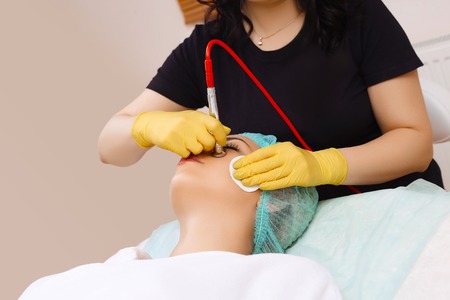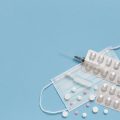Understanding Vascular Lesions and Laser Therapy
Vascular lesions are a common concern among patients in the UK, presenting as visible marks on the skin due to abnormal blood vessels. These may include conditions such as spider veins, port wine stains, and haemangiomas. Factors like genetics, ageing, sun exposure, and certain medical conditions can contribute to their development. For many individuals, vascular lesions not only affect physical appearance but can also impact confidence and wellbeing. In recent years, laser therapy has emerged as a highly effective solution for treating these lesions. Utilising advanced technology, lasers target the blood vessels beneath the skin’s surface without causing damage to the surrounding tissue. This modern approach is tailored to suit a range of skin types and lesion severities commonly seen across the UK population. Patients now have access to safe, minimally invasive treatments that offer promising results with minimal downtime—making laser therapy an increasingly popular choice on the patient journey towards clearer, healthier-looking skin.
2. Initial Consultation and Assessment
Your journey towards laser therapy for vascular lesions begins with the all-important initial consultation at a reputable clinic. This first appointment is designed to give you a clear understanding of your condition and whether laser treatment is suitable for your needs. During this session, you will meet with a specialist—often a dermatologist or vascular surgeon—who has experience in treating vascular skin concerns.
What Happens at Your First Appointment?
The initial assessment is thorough and patient-focused. The specialist will take a detailed medical history, enquire about any previous treatments or underlying health conditions, and discuss your expectations from therapy. An in-depth physical examination follows, where your vascular lesions will be carefully inspected. Depending on the complexity of your case, additional diagnostic tools such as dermoscopy or imaging may be used to better understand the depth and nature of the lesions.
How Suitability for Laser Therapy Is Determined
Not all vascular lesions respond equally well to laser therapy. Therefore, your clinician will assess factors such as lesion type (e.g., port-wine stains, spider veins), size, location, skin type, and overall health status to decide if this modality is appropriate for you. Safety is paramount, and your practitioner will explain any risks or alternative treatments that may be more suitable.
Key Elements of Your Initial Assessment
| Assessment Step | Description |
|---|---|
| Medical History Review | Discussion about past illnesses, medications, allergies, and previous skin treatments. |
| Physical Examination | Careful inspection and measurement of the vascular lesions by the specialist. |
| Diagnostic Tools (if needed) | Use of dermoscopy or imaging to evaluate lesion characteristics more closely. |
| Treatment Discussion | Explanation of how laser therapy works, expected outcomes, potential side effects, and other available options. |
| Personalised Treatment Plan | If you are deemed suitable for laser therapy, a bespoke plan outlining the number of sessions and aftercare instructions will be discussed. |
This initial consultation sets the foundation for your entire treatment pathway. By focusing on your unique needs and ensuring every decision is clinically sound, UK specialists aim to deliver safe, effective care tailored to each individual patient’s journey.
![]()
3. Preparing for Your Laser Therapy Session
A Step-by-Step Guide to Getting Ready
Proper preparation is essential for a smooth and effective laser therapy experience. In the UK, NHS and private clinics alike follow specific protocols to ensure patient safety and optimal outcomes. Here’s what you need to know before your appointment.
Pre-Treatment Instructions
Your clinician will provide detailed pre-treatment guidelines during your consultation. Typically, you should avoid sun exposure, tanning beds, or self-tanning products for at least four weeks before your session. Refrain from using skincare products containing retinol, glycolic acid, or other exfoliants on the target area for several days prior to treatment. If you are taking any medications, especially blood thinners or antibiotics, inform your practitioner as adjustments may be necessary. Patients with cold sores or skin infections in the treatment area should notify their clinic immediately.
What to Bring to Your Appointment
On the day of your procedure, bring your NHS number or private insurance details, a list of current medications, and any medical records relevant to your vascular lesions. Wear comfortable clothing that allows easy access to the treatment area. It’s also advisable to carry a bottle of water and a book or magazine, as there may be a short wait before your session begins. Most UK clinics discourage bringing valuables; secure these items at home whenever possible.
Practical Advice Unique to the UK Healthcare Environment
If you’re attending an NHS clinic, arrive early to allow time for check-in and potential paperwork. Public transport is widely used across the UK; plan your journey in advance using local travel apps or websites such as National Rail or Transport for London (TfL). For those driving, check parking availability at the clinic ahead of time—some NHS sites require permits or offer limited spaces. If English is not your first language, many clinics can arrange an interpreter with prior notice.
Final Checklist Before Your Session
- Confirm your appointment date and time
- Follow all skincare instructions given by your practitioner
- Arrange for someone to accompany you if you feel anxious or require assistance post-treatment
- Prepare any questions you wish to discuss with your clinician on the day
By following these steps and understanding what is expected within the UK healthcare setting, you can approach your laser therapy session with confidence and peace of mind.
4. What Happens During the Laser Procedure
The Treatment Day: Step-by-Step Experience
On the day of your laser therapy for vascular lesions, you can expect a carefully orchestrated process that ensures both your safety and comfort. Here’s a comprehensive walkthrough of what typically happens during your visit:
Check-In and Pre-Treatment Preparation
| Step | Description |
|---|---|
| Arrival & Registration | You will be greeted at reception where your personal details are confirmed and any outstanding paperwork is completed. |
| Consultation Review | Your clinician will review your medical history, discuss any last-minute concerns, and confirm the treatment plan. |
| Skin Preparation | The area to be treated is cleansed thoroughly, and protective eye shields may be provided to ensure your safety during the procedure. |
The Laser Procedure Itself
Once preparations are complete, you will be comfortably positioned, either lying down or seated depending on the location of the lesion. The clinician will explain each step as it unfolds, ensuring you feel informed and reassured throughout.
| Aspect of Experience | Details |
|---|---|
| Sensations During Treatment | You may feel a mild stinging or snapping sensation as the laser targets the blood vessels. Many describe it as similar to the flick of an elastic band against the skin. |
| Pain Management Options | If needed, topical anaesthetic creams may be applied beforehand, and cooling devices or cold air may be used during treatment for added comfort. |
| Duration | The length of the procedure varies according to the size and number of lesions but typically ranges from 15 minutes to an hour. |
| Interaction with Clinical Team | Your clinical team remains attentive throughout—checking in with you regularly to monitor your comfort and answer any questions that arise. |
Communication and Reassurance Throughout Your Session
Open communication is encouraged during your session. The clinical staff will guide you through each phase, providing clear instructions and immediate feedback about what you might feel or see. Should you experience discomfort or need a break, simply let your clinician know; they are there to support you every step of the way.
5. Aftercare and Recovery
After undergoing laser therapy for vascular lesions, proper aftercare is essential to ensure optimal results and minimise complications. Here’s what UK patients can expect post-procedure, along with practical tips tailored to British lifestyles.
Immediate Post-Procedure Guidance
Directly after treatment, it’s common to experience mild redness, swelling, or a sensation similar to sunburn in the treated area. NHS guidelines recommend gently cooling the skin with a clean, damp cloth or a cold gel pack (wrapped in a tea towel) for short intervals to ease discomfort. Avoid applying any perfumed products or makeup on the area for at least 24 hours.
Managing Everyday Activities
Most individuals can return to work and daily activities almost immediately, making laser therapy a convenient choice for busy lifestyles. However, it is advisable to avoid strenuous exercise, hot baths, saunas, and swimming pools for at least 48 hours post-treatment. This helps reduce the risk of irritation or infection.
Sun Protection
The unpredictable British weather means you might not always expect strong sun exposure. Nevertheless, protecting your skin from UV rays is crucial after laser therapy. Use a broad-spectrum sunscreen with at least SPF 30 and wear protective clothing if you’re outdoors, even on overcast days.
Expected Outcomes and Follow-Up
You may notice an improvement within days, but full results often develop over several weeks as the body clears away treated vessels. Some vascular lesions require multiple sessions for best results—your practitioner will advise on an appropriate schedule based on your individual needs. Should you notice signs of infection or prolonged discomfort, contact your clinic or GP promptly.
Supporting Your Recovery at Home
To ensure a smooth recovery, keep the treated area clean and dry, avoid picking or scratching scabs if they form, and stay hydrated. Following these UK-standard aftercare measures will help you achieve the best possible outcome from your laser therapy journey.
6. Follow-up and Long-Term Results
After undergoing laser therapy for vascular lesions, the follow-up process is an essential part of ensuring optimal outcomes and maintaining healthy skin. In the UK, you can expect your clinic or NHS specialist to schedule a review appointment typically within four to six weeks after your initial treatment. This allows your practitioner to assess healing, monitor the effectiveness of the procedure, and determine if further sessions are necessary.
What to Expect During Follow-Up
During your follow-up visit, your clinician will carefully examine the treated area for any signs of side effects such as pigmentation changes, scarring, or persistent redness. They may also take photographs to track progress over time. If additional laser sessions are required—especially common with more extensive or deeper vascular lesions—these will be spaced several weeks apart to allow your skin sufficient time to recover.
Typical Timelines for Results
Most patients in Britain notice visible improvements within two to four weeks post-treatment as bruising and redness subside. However, final results may take up to three months as your body gradually reabsorbs treated vessels. It is important to remember that individual healing times vary based on skin type, lesion severity, and adherence to aftercare advice.
Maintaining Skin Health After Laser Therapy
Protecting your skin following laser therapy is vital for long-term success. British dermatologists strongly recommend using a broad-spectrum sunscreen daily—even on cloudy days—to prevent sun-induced damage and reduce the risk of hyperpigmentation. Gentle skincare products should be used, avoiding harsh exfoliants or perfumed creams until your practitioner advises otherwise. Keeping the treated area moisturised with fragrance-free emollients can help soothe irritation and promote quicker healing.
If you experience any unexpected symptoms such as blistering, excessive swelling, or signs of infection, it is crucial to contact your clinic or GP promptly. By following these guidelines and attending all scheduled reviews, most patients in the UK achieve excellent, lasting improvement in both appearance and confidence following laser therapy for vascular lesions.


